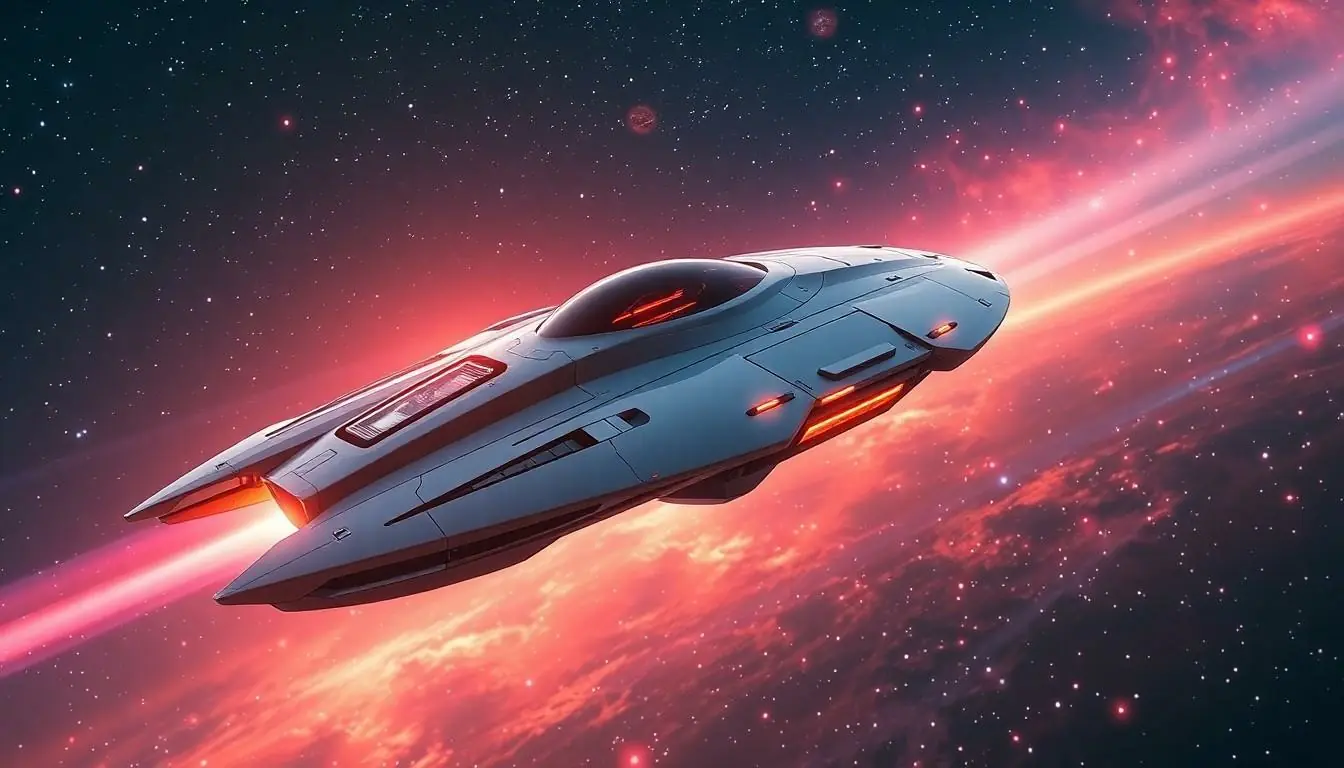Table of Contents
ToggleImagine zipping through the cosmos at warp speed, sipping coffee while orbiting Mars. Future space travel technology isn’t just a sci-fi dream; it’s a thrilling reality on the horizon. With advancements in propulsion systems and spacecraft design, humanity is on the brink of interstellar adventures that would make even Captain Kirk jealous.
Overview of Future Space Travel Technology
Future space travel technology encompasses various innovative advancements that promise to revolutionize how humanity explores the cosmos. Propulsion systems play a crucial role in achieving faster-than-light travel, with concepts like ion thrusters and fusion drives gaining traction. Ion thrusters utilize electrically charged ions for thrust, providing high efficiency and long-duration propulsion. Fusion drives, on the other hand, have the potential to harness nuclear fusion reactions, significantly decreasing travel time to distant destinations.
Spacecraft design also undergoes significant transformations. Advanced materials such as carbon nanotubes and 3D-printed structures contribute to lighter and stronger spacecraft, enhancing overall performance. With improved designs, spacecraft may incorporate artificial intelligence for autonomous navigation and decision-making. AI systems enable real-time problem solving, optimizing flight paths, and managing onboard resources effectively.
Sustainable life support systems receive particular attention. Closed-loop systems recycle air, water, and waste, creating a self-sustaining environment for astronauts. These systems could support long-term missions to Mars and beyond, reducing dependency on Earth resources.
Space tourism emerges as another exciting aspect. Companies continue developing spacecraft specifically for space tourists, offering suborbital flights and lunar excursions. Noteworthy advancements in safety protocols and passenger comfort are vital for widespread adoption.
Lastly, in-orbit manufacturing and resource utilization define future exploration. Utilizing materials from asteroids or the Moon could significantly reduce launch costs from Earth. This approach fosters a sustainable model for off-Earth colonization and resource management, making interstellar travel increasingly viable.
This rapidly evolving landscape positions humanity to embark on unprecedented journeys among the stars, turning the dream of deep-space exploration into a tangible reality.
Emerging Technologies in Space Travel

Exciting advancements emerge in space travel technology, positioning humanity for remarkable cosmic exploration. These advancements promise to redefine the future of interstellar journeys.
Propulsion Systems
Innovative propulsion systems enhance the potential for faster-than-light travel. Ion thrusters, for instance, offer increased efficiency, making long-distance travel feasible. Fusion drives represent another breakthrough, utilizing nuclear reactions to provide significant thrust. These technologies may reduce travel time to distant destinations drastically. Future missions could leverage these systems, transforming expeditions into shorter journeys across the cosmos. Research continues to advance these methods, paving the way for faster, more efficient space exploration.
Spacecraft Design Innovations
Innovations in spacecraft design are crucial for successful space missions. The use of advanced materials like carbon nanotubes creates lightweight yet strong structures. Designing spacecraft with 3D-printed components further enhances durability while streamlining production. These changes contribute to improved fuel efficiency and resilience in harsh space conditions. Artificial intelligence integration stands out as a game-changer, enabling autonomous navigation and real-time decision-making. This integration optimizes flight paths and resource management, ensuring safety and efficiency in long-duration excursions.
The Role of AI and Automation
AI and automation play crucial roles in the future of space travel, enhancing efficiency and safety in various operations.
Autonomous Navigation
AI enhances spacecraft navigation by enabling autonomous systems. Spacecraft can calculate optimal flight paths through vast distances in real time. These systems process data from multiple sensors and make adjustments instantly, reducing human error. For instance, AI can analyze gravitational fields and atmospheric conditions to ensure smooth travel. Autonomous navigation minimizes the need for constant human oversight, making long-duration missions more feasible.
Robotics in Space Missions
Robotic systems are integral to future space missions, supporting various tasks from maintenance to exploration. These robots can perform repairs and conduct experiments without direct human involvement. Advanced robotics equipped with AI can adapt to unexpected conditions, enhancing mission success. For example, rovers on Mars gather data and perform analysis autonomously, enabling scientists to focus on critical findings back on Earth. Automation in robotics increasingly reduces the risks associated with human presence in hazardous environments.
Sustainable Space Exploration
Sustainable space exploration focuses on advancing methods and technologies that minimize environmental impact while maximizing efficiency in cosmic travel. Essential elements of this strategy include propellant production and life support systems.
Propellant Production in Space
Propellant production in space revolutionizes mission potential. Manufacturing fuel on celestial bodies eliminates the need to carry large amounts from Earth. For example, extracting water from lunar ice can produce hydrogen and oxygen, vital for rocket fuel. In addition to enhancing mission efficiency, in-situ resource utilization significantly reduces launch costs. Companies are exploring various techniques, including chemical extraction and thermal processing, to establish reliable methods of propellant synthesis. This approach also aligns with long-term colonization goals by creating a sustainable fuel supply.
Life Support Systems
Life support systems are crucial for supporting human presence in space. Developments focus on closed-loop technologies that recycle air, water, and waste effectively. For instance, advanced bioreactors can purify water while providing oxygen, creating a self-sustaining environment for long missions. Growth of plants in controlled environments further contributes to food production and oxygen generation, which enhances psychological well-being for astronauts. Efficient systems lower the dependence on resupply missions from Earth, optimizing overall mission feasibility. Prioritizing sustainability in life support not only ensures survival but also enriches the exploratory experience.
Challenges and Considerations
Space travel technology faces multiple challenges and considerations that require thorough evaluation.
Cost and Funding
Funding for space exploration projects remains a significant hurdle. Entities, including governmental organizations and private companies, necessitate substantial financial resources to develop and implement cutting-edge technologies. For instance, estimates indicate that space missions could range from hundreds of millions to several billion dollars. Additionally, developing sustainable funding models has become critical, as exploring beyond Earth demands continuous investment. Partnerships between public and private sectors can distribute costs while driving innovation. Financial backing will need to prioritize long-term missions alongside immediate returns, ensuring future advancements in space travel technology.
Legal and Ethical Implications
Legal frameworks must adapt to accommodate the evolving landscape of space exploration. Space treaties like the Outer Space Treaty of 1967 govern actions in space, yet new challenges arise with increased commercial activity and potential resource exploitation. Ethical considerations also come into play, particularly regarding planetary protection and the preservation of extraterrestrial environments. Addressing these implications ensures a responsible approach to exploration and habitation beyond Earth. Collaboration between international stakeholders can foster regulatory frameworks that balance exploration benefits and environmental sustainability, making the future of space travel both secure and equitable.
The future of space travel technology holds immense promise for humanity. With advancements in propulsion systems and spacecraft design, interstellar journeys may soon become a reality. Innovations like AI-driven navigation and sustainable life support systems are set to enhance safety and efficiency in space missions.
As the industry evolves, collaboration between public and private sectors will be crucial in overcoming funding challenges and addressing ethical considerations. The dream of exploring the cosmos is not just a fantasy but an achievable goal that could redefine human existence. As these technologies develop, they’ll pave the way for unprecedented adventures and a deeper understanding of our universe.





